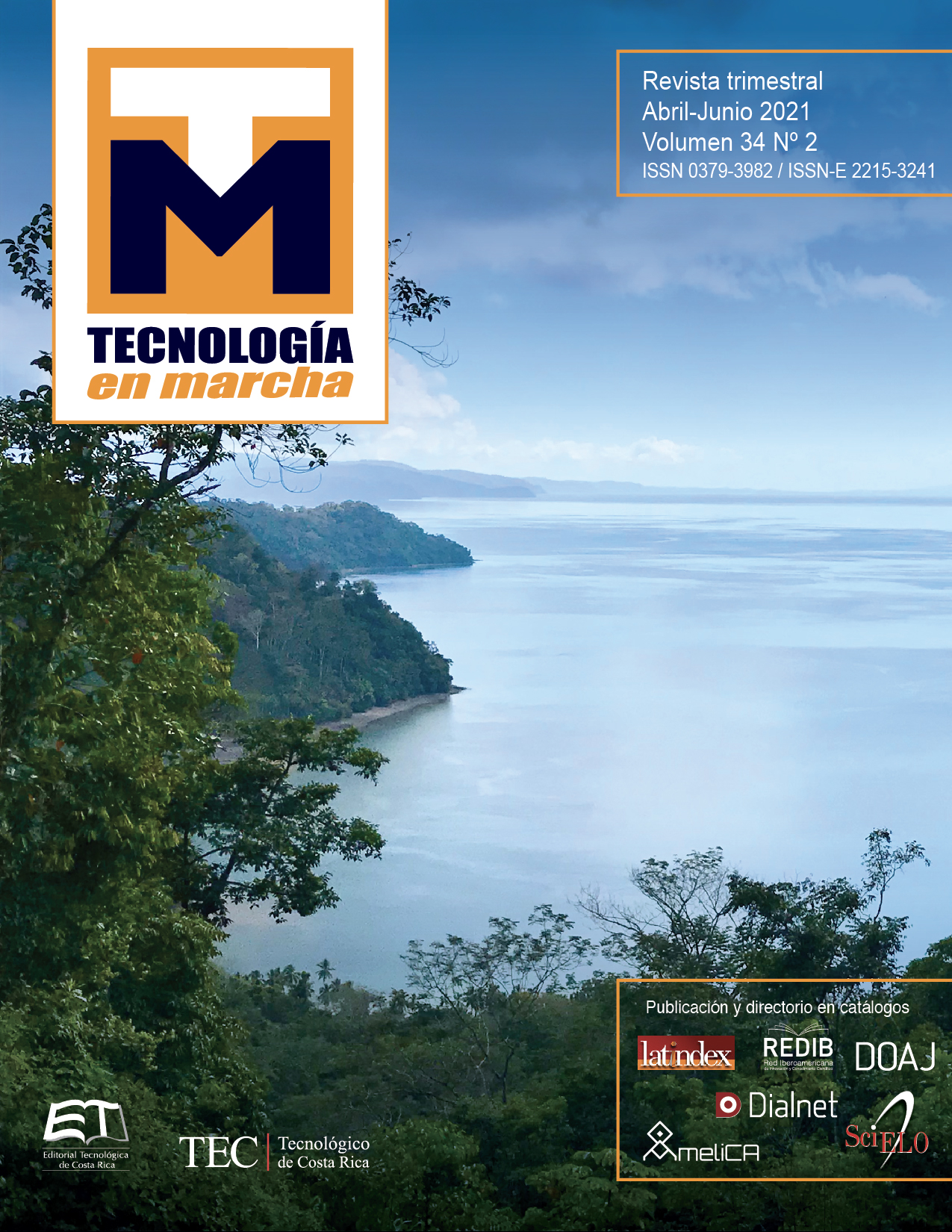Alternative materials as an opportunity to reduce environmental impacts in the construction sector
Main Article Content
Abstract
The constructions have become a serious environmental problem, because the high demand for natural resources and the massive production of large-scale waste that require special management. It’s necessary to rethink the materials used in the sector, and apply new technologies for extraction and production methods, as well as instruments that help in the reduction of the environment damages of constructions. In this way, was used a bibliographic search of various documents, mainly from the databases of the National University of Costa Rica, among other academic search engines. The methodological process was a qualitative investigation, where the theory and the literature review were the frame of reference. The objective was to identifying some of the alternative materials that can be replaced by the use of conventional materials, such as adobe, wood, hemp, straw, bamboo and eco-bricks made with household waste. The alternative materials are capable of giving the same structural support to a constructive work, in comparison with other conventional materials. This help to reduce the footprints of construction materials and improve the environmental materials that are low costs and other negative environmental impacts are minimized.
Article Details

This work is licensed under a Creative Commons Attribution-NonCommercial-NoDerivatives 4.0 International License.
Los autores conservan los derechos de autor y ceden a la revista el derecho de la primera publicación y pueda editarlo, reproducirlo, distribuirlo, exhibirlo y comunicarlo en el país y en el extranjero mediante medios impresos y electrónicos. Asimismo, asumen el compromiso sobre cualquier litigio o reclamación relacionada con derechos de propiedad intelectual, exonerando de responsabilidad a la Editorial Tecnológica de Costa Rica. Además, se establece que los autores pueden realizar otros acuerdos contractuales independientes y adicionales para la distribución no exclusiva de la versión del artículo publicado en esta revista (p. ej., incluirlo en un repositorio institucional o publicarlo en un libro) siempre que indiquen claramente que el trabajo se publicó por primera vez en esta revista.
References
L. Abarca, “Nivel de importancia de las causas de generación de residuos en la construcción en Costa Rica”, Tecnología en Marcha, 30(4), pp. 130-137, Diciembre 2017.
J. Morenilla, y F. Martínez, “Materiales para la bioconstrucción”, Cercha , 108 (1), 68-73, Junio 2011.
J. Ruiz, V. Cristini, y P. Madrigal. (2011, Julio 15). Materiales de construcción sostenibles y/o alternativos: base de datos generada con una plataforma cooperativa digital. [En línea] Disponible en: https://riunet.upv.es/bitstream/handle/10251/53701/M211.pdf?sequence=1
S. Rosales, “Residuos peligrosos de la construcción en Costa Rica y sus impactos al ambiente”, Tesis de Grado, Escuela de Química, Tecnológico de Costa Rica, Cartago, Costa Rica, 2017.
INTECO. ISO 14001 Sistemas de gestión ambiental. Requisitos con orientación para su uso. Costa Rica: INTECO. 2015
E.Rocha, “Construcciones sostenibles: materiales, certificaciones y LCA”. Revista nodo, 11 (6), 99-116. Diciembre 2011
J,Morenilla y F, Martínez. Materiales para la bioconstrucción.Cercha , 108 (1), 68-73. 2011
R, Hernández. Fernández, C., & Baptista, P. Metodología de la investigación. 4 edición. Mc Graw Hill Interamericana. 600 p.
Escuela de Organización Industrial. (2011). Ecomateriales y Construcción Sostenible. Disponible en: https://www.eoi.es/es/file/39025/download?token=X-Yw0M4n.
J. González, (2014). Bioconstrucción Construcción Natural y Tecnologías Apropiadas (Trabajo de graduación). Universidad de San Carlos de Guatemala, Guatemala.
B. Dobón, “Materiales de construcción reciclados y reutilizados para la arquitectura sostenible” (trabajo de graduación), Universidad Politécnica de Valencia, Valencia, España, 2018.
M. Bernal, “Uso de la paja en la construcción de paneles aislantes o estructurales, aprovechamiento de residuos de cereales de la agricultura” (trabajo de graduación), Universidad Militar Nueva Granada, Bogotá, Colombia, 2018.
G. Minke, y F. Mahlke, Manual de construcción con fardos de paja. Alemania: Editorial EcoHabitar, 2018.
B. Torres, M. Segarra, y L. Bragança, “El bambú como alternativa de construcción sostenible”. Extensionismo, innovación y transferencia tecnológica. Claves para el desarrollo., vol. 5, pp. 389-400, Agosto 2019. DOI: http://dx.doi.org/10.30972/eitt.503787.
A. Isan, (2018, Mayo 30). Ladrillos ecológicos: Qué son, tipos y ventajas. [En línea]. Disponible en: https://www.ecologiaverde.com/ladrillos-ecologicos-que-son-tipos-y-ventajas-456.html
Instituto Mesoamericano de Permacultura (IMAP). (2012, Agosto 17). Las ventajas del Eco-Ladrillo. [En línea]. Disponible en: htts://imapermacultura.wordpress.com/2012/08/17/las-ventajas-del-eco-ladrillo

